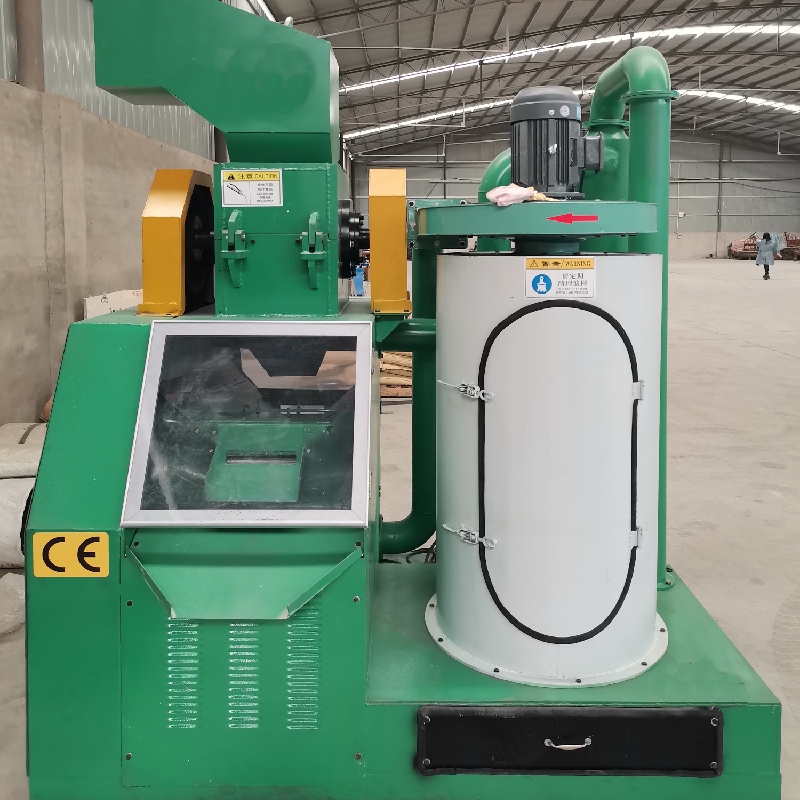
Oct . 28, 2025 15:15 Back to list
The latest generation of Copper Wire Granulators coming out of Dafu Village, Qingyuan Town, Qingyuan District, Baoding City, Hebei Province are, frankly, more pragmatic than flashy. They’re built for the everyday mess: mixed car harness, telecom drop lines, and oddball cables from demolition sites. I’ve walked a few plants where operators said the same thing—if a machine can keep running without babysitting, it wins.

Designed to crush and separate copper from insulation in cables sized roughly 0.02 mm up to 50 mm, Copper Wire Granulators handle car cables, communication lines, and general plant scrap. The better ones use a dry process—no water, minimal mess—so you can run inside a city facility without headaches.

| Throughput | ≈ 300–1,500 kg/h (depends on feed mix and prep) |
| Input cable range | 0.02–50 mm diameter (single/multi-core) |
| Copper purity | ≈ 98.5–99.9% after electrostatic polishing |
| Power demand | ≈ 35–95 kW total connected; VFD-driven |
| Noise | ≈ 75–82 dB(A) at 1 m (enclosed cabinet) |
| Service life | Knives 600–1,500 h; bearings ≈ 12,000+ h with proper lube |
Note: values are from mixed-cable tests; real-world use may vary.

Many customers say the big win is consistency—less copper in the plastic fluff. And, to be honest, dust control is what separates a “demo unit” from a keeper.

| Vendor | Throughput | Purity | Noise | Certs | Notes |
|---|---|---|---|---|---|
| OW Recycling (Hebei) | ≈ 0.3–1.5 t/h | 98.5–99.9% | 75–82 dB(A) | CE, ISO 9001/14001 | Good dust handling; value-focused |
| Vendor A (EU) | ≈ 0.5–2.0 t/h | 99–99.9% | 72–80 dB(A) | CE, EN 50625 | Premium automation; higher capex |
| Vendor B (US) | ≈ 0.2–1.0 t/h | 98–99.5% | ≈ 78–84 dB(A) | UL/cUL, CE | Strong after-sales network |

In a mixed trial (≈60% car harness, 40% comm cable), Copper Wire Granulators achieved 99.2% copper purity, metal loss in plastic ≤ 0.6%, dust at outlet after baghouse ≈ 3–5 mg/m³, and measured sound pressure 78 dB(A) at 1 m. Not lab-perfect, but solid.

Automotive recycler, Southeast Asia: shifted from manual stripping to a 1 t/h line; payback ≈ 11 months thanks to reduced labor and higher copper recovery.
Telecom contractor, EU: added electrostatic polishing stage; copper-in-fluff dropped from ~1.4% to ~0.5%. “Less re-run, less arguing with the buyer,” they told me, which is exactly the point.
Look for CE (Machinery Directive), ISO 9001/14001 at the factory level, and alignment with WEEE handling. Noise and dust should meet local regulations; I guess it’s obvious, but do validate on-site with your exact feed.
Latest news
Trusted Double Shaft Shredder Supplier | Durable Industrial & Recycling Solutions
NewsNov.24,2025
Double Shaft Shredder Price Explained: Global Trends, Benefits & Vendor Comparisons
NewsNov.24,2025
Expert Insights into Double Shaft Shredder Factory: Boosting Global Recycling Efficiency
NewsNov.23,2025
Leading Double Shaft Shredder Suppliers for Industrial Recycling and Waste Management
NewsNov.23,2025
Leading Double Shaft Shredder Manufacturers | Durable & Sustainable Industrial Shredders
NewsNov.23,2025
Understanding Double Shaft Shredder Machine Price: Buyers’ Guide & Global Insights
NewsNov.22,2025